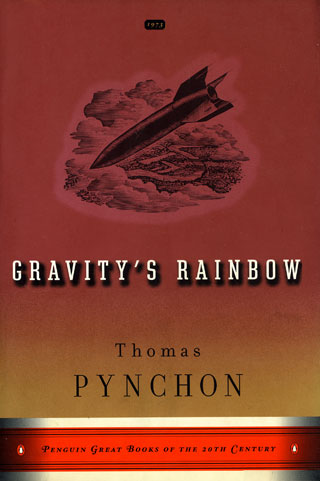Happy beginning or ending of your week, readers!
We all went to Sunday Mass this morning, dropped off Gabriel at Sunday school, chatted with fellow parishioners afterwards on the steps, had a nice brunch...
Just kidding. I'm a little afraid of these fire-and-brimstone, lardy Georgia church-goers. The first two sets of neighbors to welcome us to the neighborhood tried to convert us to their churches... We've never talked to them again.
On the actual agenda today: grading and Power point presentation preparation (try playing with that 4-word beast a few times) for Julia; hauling out the old riding mower for me; for Gabriel, the usual mess-making.
And, Gawd, these allergies! The pollen just shimmies loose from the old trees down here and piles up on the porch and driveway, seemingly an inch high off the ground.
*
We'll keep going with the daily Soul tracks for the month. I could choose about three-dozen Marvin Gaye songs, but some reason this one jumped into my mind:
From his 1973 album Let's Get it On, "You Sure Love to Ball" is, like, most Marvin Gaye songs after What's Goin' On, about the hot-and-heavy business. But Gaye's expressive vocals and the gorgeous accompaniment transcend the themes (at least for me). Forget Hendrix, Morrison, Cobain, Holly - there's no one in pop music history who leaves me with a feeling of what-could-have-been like Gaye, and that is something, considering the great oeuvre he did leave behind in twenty years in the business.
The album is on almost any greatest albums (soul, 70s, etc.) list. Everyone knows the title track, which sets the entire mood; an Amazon.com describes the album as a "marvel of sexual blandishment." It was Gaye's twelfth studio album, spawned many memorable songs: the title track, "Come Get to This," "Distant Lover." It's marvelously sustained and romantic, a smash hit (#1 on the soul, #2 on the pop album charts), Gaye's second greatest album (after 1971's What's Goin' On).
http://www.youtube.com/watch?v=wSTIgEPtxOs
*
Book Review
Jonathan Franzen brought it to the public's attention years ago that Desperate Characters, a slim 1970 novel by Paula Fox (best known for her young adult novels, such as 1974's The Slave Dancer), is one of the greatest "lost" masterpieces in 20th century American literature. Like most of Fox's other adult novels, it was long out of print. Thanks to Franzen and an inspired cult following, the book is back (well, it has been for a while now) and is most surely a must-read.
A quietly devastating, perceptive novel, the book centers on Sophie and Otto Bentwood, a well-to-do couple who have bought an renovated a Brooklyn brownstone. Right off the bat, we sense the embittered. fragile couple's besiegement by a nightmarish world (the book is set during the Vietnam era): a stray cat that Sophie feeds bites her, leading to her book-long panic that she has rabies.
Other images and mysterious, blunt happenings evoke a world gone askew: a prank call; a rock through a friend's bedroom window; an African American vomiting across the street and falling in it; a neighbor urinating out his window; a panicked, babblingly thankful man requesting to use their phone; the couple's summer home on Long Island slashed and burglarized, with the hoodlums leaving a pile of feces as a calling card.
Sophie, troubled by (but not opening up about) her affair with her husband's colleague, and Otto, breaking up with longtime business partner, never feel less than real, specific characters. Fox delineates the makeup of the character accurately and acutely, but leaves a lot for the reader's imagination too.
The sense of place is skillfully drawn, without exaggeration. It's a troubling book because the picture Fox paints of society is so bleak, but there's ample humor too, and Fox never condescends to the characters (Sophie and Otto seem to be snobs, but that's more implied than showcased).
Fox's prose style feels fresh, liberating - there's nary a page where we don't understand what it is she's trying to describe or illuminate. I'm not sure I've read a recent book in memory where a sense of unfinished business, of lingering, comes across so finely. When I finished the book, I didn't feel a sense of resolve, of things being over. I was still on edge, discomfited, not sure where an of the characters compasses were pointing. Like the best books (or movies or preternaturally cancelled TV shows), when it's end, it's really far from over, for the characters will go on existing in your head.
As good as advertised.
(****1/2)
*
My goal was and is to read 100 books this year; hey, I'm jobless, guys, give me a break! Right now, as of June 3, I have reached the halfway point. 50 down, half a century to go. I'll probably slow down at some point, but as long as I can average 7 books a month from here on in, I'll do it! (And somewhere someone will care...)
*
Continuing onward with our list (via Professional Photographer) of the 100 Most Influential Photographers of All Time.
Duane Michaels (#45)
The Pennsylvania-born Michaels (b. 1932) might be best-known today for his gay-themed images, but he has had a rich, varied career. His career and home life based around Philadelphia, Michaels gained renown for the ways in which his carefully-staged photos told a sequential story (he often writes on his photos too). Michaels has done loads of commercial work - Life, Sports Illustrated, Time, album photography - but also unique individual work that has been the feature of many museum exhibits and shows. A defining work by him, an example of his sequential photographs, is Chance Meeting (below), inspired by Michaels passing by what might have been a Korean War buddy years later in Times Square. For Michaels, his career as a photographer has been about going beyond mere observation.
 |
| 1970's inquisitive Chance Meeting sequence of photos |
 |
| 1965's Coming and Going, featuring one of Michaels' idols, Rene Magritte |
*
Happy would-be 86th Birthday, Allen Ginsberg. Howl is not, by any means, my favorite poem (I'm not sure I do have a favorite), but it was influential in the Beat movement. For some reason, Ginsberg makes me think of William Burroughs, which (naturally) makes me think of Naked Lunch, which makes me think of, along with Naked Lunch, 10 other books that I, as an English major (and as a mostly curious human being), should read in my lifetime (and some that I've tried unsuccessfully to finish) but likely never will:
 |
| though I'm kind of curious about Walter Salles' upcoming film |
 |
| sorry, no invented languages for me |
Images courtesy of:
http://images.45cat.com/marvin-gaye-you-sure-love-to-ball-tamla.jpg
http://kimbofo.typepad.com/.a/6a00d83451bcff69e20120a52f4d0a970c-300wi
http://p2.la-img.com/404/10630/2509621_1_l.jpg
http://www.pacemacgill.com/gfx/images/dmi/kanddgrid.jpg
https://blogger.googleusercontent.com/img/b/R29vZ2xl/AVvXsEhqLpDAkv1IcEl5FDLllWR7O5HNWq_3fwYSyimmWJdZtuEHu7WThtgiw6MqgkI6iJuNfVC6Sp84pYqT7mVrtWFqcPPcUWwpiG5tW7m45O9qthcKy1bcI1Bo4N4f_ERDROyU7dp-1JeH4L1D/s1600/coming+and+going.jpg
http://blog.pshares.org/files/2011/06/lighthouse.jpg
http://www.umershafqat.com/wp-content/uploads/2011/04/War-and-Peace-book.jpg
http://photo.goodreads.com/books/1167094189l/18765.jpg
http://photo.goodreads.com/books/1165555299l/6149.jpg
http://zouchmagazine.com/wp-content/uploads/2011/11/pynchon-gravitys-rainbow.jpg
http://photo.goodreads.com/books/1216748331l/70401.jpg
http://content.scholastic.com/yawyr/b9f909865e942173d7908d78b6a290a6b8449684.jpg
http://bookcoverarchive.com/images/books/a_clockwork_orange.large.jpg
http://photo.goodreads.com/books/1335676143l/2175.jpg
http://ufvcascade.ca/wp-content/uploads/2011/03/donquixote.jpg
Information:
http://www.kpbs.org/news/2009/nov/04/duane-michals-photographer-or-metaphysician/










0 comments:
Post a Comment